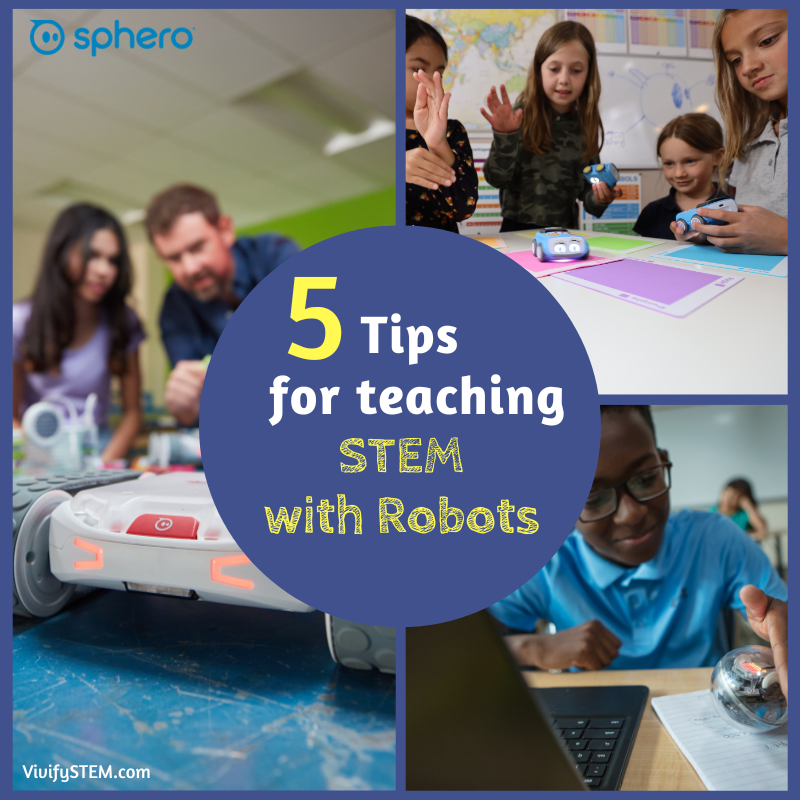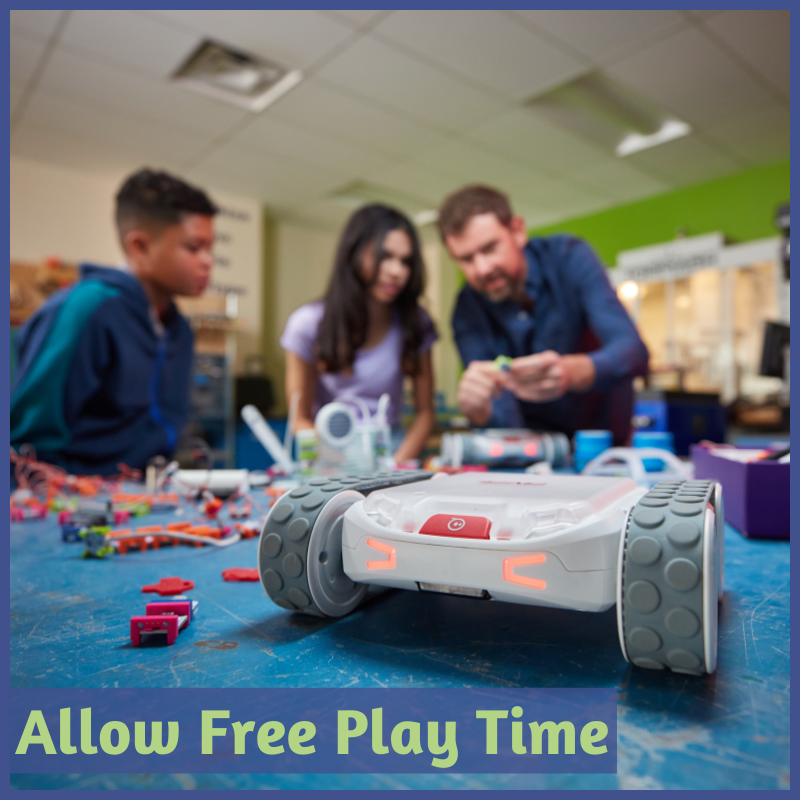5 Tips for Teaching STEM With Robots
Guest Post by Sphero Team
March 3, 2023
Robots are not quite living up to the promises of science fiction movies, but they are still doing some pretty amazing things in our everyday lives, especially in the classroom. With programmable robots like Sphero, you can introduce students to the world of robotics in a fun and engaging way while they learn valuable STEM subjects and important skills.
Programming Sphero robots can help students develop essential skills like problem-solving, critical thinking, creativity, and teamwork. From building simple obstacle courses to working through real-life cybersecurity challenges, students will be fascinated by what they can get robots to do, no matter what grade they are in.
Sphero is transforming PK-12 education with robots and STEM kits that encourage imagination and exploration:
indi: ideal for PreK–2nd Grade
Driven by color, indi is designed to introduce early learners to the fundamentals of computational thinking, STEAM, and computer science principles while encouraging open-ended, imaginative play-based learning with real-life scenarios as students build custom mazes and solve puzzles.BOLT: ideal for 3rd–8th Grade
BOLT is Sphero’s most advanced coding robotic ball to date, providing even more ways to express inventive ideas and experience the power of programming.RVR+: ideal for 6th–12th Grade
Sphero’s most versatile programmable robot yet, packed with a diverse suite of sensors and built for customization. Drive RVR+ precisely and accurately right out of the box – no assembly or complicated setup required.
Below are five tips to help you make the most of teaching STEM and robotics in your classroom. Let’s dive in and discover what you can do with Sphero!
Tip 1: Begin With the Basics
Starting with the basics is important when teaching robotics with Sphero. By beginning with simple programming exercises, students can build a foundation of knowledge they can add to as they progress.
Here are some simple activities to start with:
Have students discover how indi reacts to certain colors by building a simple path for it to follow with the included color tiles;
Have students program simple shapes for BOLT to outline;
Have students program RVR+ to push an object from one point to another and back.
Tip 2: Encourage Collaboration and Teamwork
Collaboration and teamwork are essential skills in any STEM field, and Sphero provides an excellent opportunity for students to develop them. By working together on programming projects, students can learn from each other, build on each other’s ideas, and learn to communicate their ideas effectively.
A few ways to do this are:
Assign group projects where students must collaborate to complete a task or accomplish a goal, like engineering a snow plow powered by Sphero BOLT to code the plow to clear a path of cotton ball “snow”.
Hold class challenges where students can compete against each other, like a robotic pentathlon, race, or obstacle course speed trials.
Tip 3: Solve Real-World Problems
A STEM lesson will be more relevant and engaging if it is connected to real-world problems and solutions. By programming Sphero robots to solve these types of issues, students will see the direct application of what they are learning.
Here are a few ways to simulate the real world with Sphero robots:
Prepare students for the threats they’ll face in the digital world by using Sphero BOLT to teach cybersecurity. Sphero offers a free BOLT Cybersecurity Labs Educator Guide to complement the cybersecurity labs available in the Sphero Edu app;
Have students program Sphero indi, BOLT, or RVR+ to simulate traffic patterns, promoting critical thinking and problem-solving skills in the field of transportation;
Challenge students to create an ocean clean-up machine using Sphero BOLT to help remove litter from the water.
Tip 4: Allow Free Play Time
One of the best ways to foster a love for STEM is to provide opportunities for students to find their own way through play. Give students a chance to explore and experiment on their own, and they’ll develop critical thinking and problem-solving skills along the way. After all, learning can and should be fun!
Here are a few ways you can do this:
Assign open-ended projects that allow students to explore and experiment with programming Sphero robots in new and creative ways;
Provide resources for students to continue their exploration and learning outside of the classroom;
Encourage students to use their creativity and programming skills to design a game using Sphero robots.
Tip 5: Use Guides and Curricula To Support Learning
Once students know the basics of what their robots can do and have explored a few of the things they can do with them on their own, they may look for bigger challenges. You will also want to be sure that students are learning all the key concepts of programming and robotics. Activity guides and curricula designed and provided by Sphero will help you create an environment where students excel. You can find even more activity ideas by perusing the Sphero Edu app.
Learn more about how you can make your STEM curriculum more engaging with robotics by getting in touch with a Sphero Education Specialist!
Learn More About Sphero with vivify!
Do you want to use Sphero robots in your classroom or program? Learn the basics of Sphero robotics plus strategies for use in the elementary or middle school classroom. This session covers introductory Sphero activities along with more advanced engineering design challenges involving programming. Resources and freebies are provided.
Related Vivify STEM Resources about Sphero:
Vivify STEM Podcast Episodes
Sphero blog posts from Vivify STEM:






